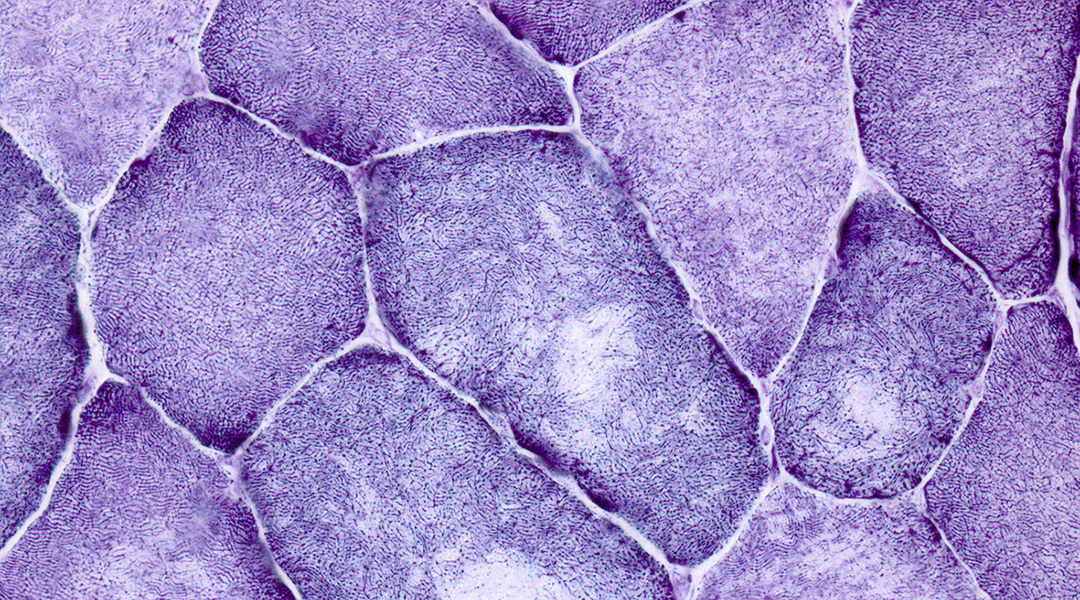After prolonged periods of inactivity, whether due to injury or disease, muscles begin to atrophy, where they start to weaken and diminish in size. Although current treatments often focus on managing symptoms or delaying disease progression, there is a lack of therapeutic drugs that can effectively target the underlying mechanisms.
Now, a study has described an approach to tackle at least one of the intracellular pathways responsible for muscle wasting. The results, shared in Advanced Biology, showed that after treatment, animals with muscular atrophy displayed reduced symptoms in affected muscles.
“The decline in muscle function and subsequent loss of functionality can impair quality of life, increase healthcare costs, and elevate mortality rates,” wrote the researchers in their paper.
There is an added hurdle: a secondary condition called fibrosis, which forms as a result of the altered metabolism in atrophying cells. Cells start producing hard, fibrous tissue that, under normal conditions, helps repair muscle following injury. However, in cases of muscular atrophy, too many fibers are produced, ultimately harming muscle function and blocking the regeneration of healthy muscle fibers.
No available drug therapies — yet
Available treatments for these types of degenerative muscular conditions rely mainly on physical exercise and diet to help rebuild healthy muscle, but this isn’t always viable for all patients — many may not be able to exercise as a result of their illness or won’t see substantive changes.
“The development of effective treatments for skeletal muscle atrophy and fibrosis remains a work in progress,” said the team. “As a result, it is crucial to enhance our understanding of the associated mechanisms and identify novel targets and therapeutic agents to alleviate muscle atrophy and fibrosis.”
Muscles are formed of various cell types among which are muscle satellite cells — muscle stem cells responsible for generating fresh muscle tissue during growth and repair. Inside these cells there are small, membrane-bound vesicles called exosomes, which carry protein, miRNA, RAN, lipids, and DNA, that when released act as cell-to-cell signals to boost muscle regeneration.
Recent research has shown that these vesicles have beneficial effects in diverse areas, such as tumor growth, viral transmission, and regulating inflammation, among others. A previous study has also shown their ability to repair damaged cartilage. But the team was interested in tissue regeneration.
“The efficacy of [muscle satellite cells exosomes] in addressing skeletal muscle atrophy and fibrosis remains to be determined,” they wrote. “Consequently, we hypothesize that [they] may suppress fibrosis and relieve muscle atrophy during muscle wasting.”
Preliminary tests show promise
To test this theory, the researchers isolated the exosomes and used them to treat rats with muscular atrophy.
One week after the injection, the team observed changes in the cellular arrangement of muscular cells in treated rats and found a decrease in atrophy signals — the cells were rounded and well organized, similar to that of healthy muscle. In an untreated control group, their muscle cells remained small and disorganized. The scientists say they also found that muscles treated with the exosomes showed less fiber accumulation.
“These results establish the protective influence of [exosomes from muscle satellite cells] on […] muscle atrophy and fibrosis,” wrote the scientists.
To better understand how the exosomes were bringing about improvements on a cellular level, the authors looked at molecular markers. After analyzing the proteins expressed in muscle cells, the scientists discovered that a particular intracellular pathway, called TGF-β1/Smad3, was overactivated during atrophy.
It was previously known that the activation of the TGF-β1/Smad3 pathway promotes fibrosis, inflammation, and muscle degeneration, exacerbating the loss of muscle mass and function. The scientists observed that in muscles treated with the exosomes, the expression of the proteins involved in this pathway was decreased, suggesting the exosomes were blocking this mechanism and helping stop the atrophy.
Targeting intracellular pathways across different diseases
More studies are needed to determine if targeting this pathway will actually help treat muscular atrophy, fibrosis, and other disorders as the activation of the TGF-β1/Smad3 intracellular pathway is common across different muscular conditions, such as Duchenne muscular dystrophy and amyotrophic lateral sclerosis — two rare diseases where muscle development is impaired and which, to date, have no cure.
For now, the positive findings of this proof-of-concept study do offer hope. “[Muscle satellite cell-exosomes]-based therapies hold promise for the prevention and treatment of muscle atrophy and fibrosis, offering new avenues for addressing muscle wasting diseases and improving patient outcomes,” concluded the researchers.
Reference: Hongwen Liu, et. al., Satellite Cell-Derived Exosomes: A Novel Approach to Alleviate Skeletal Muscle Atrophy and Fibrosis, Advanced Biology (2024). DOI: 10.1002/adbi.202300558
Feature image credit: Wikimedia Commons, Marvin 101. Published under Creative Commons Attribution-Share Alike 3.0 Germany

















